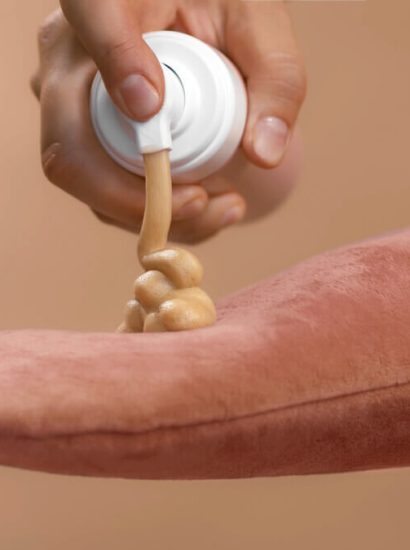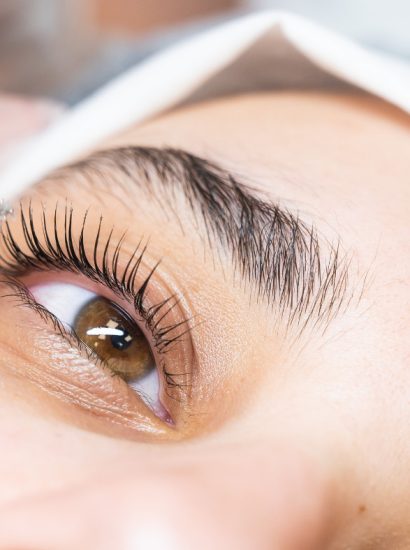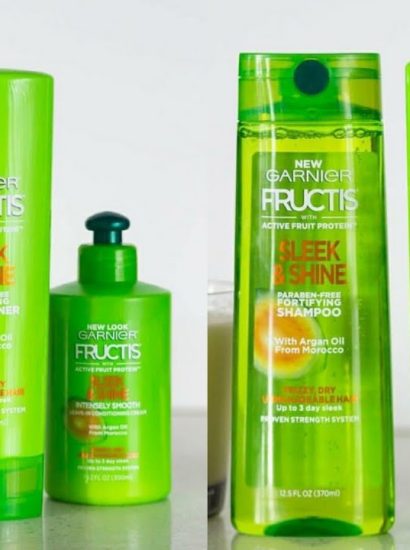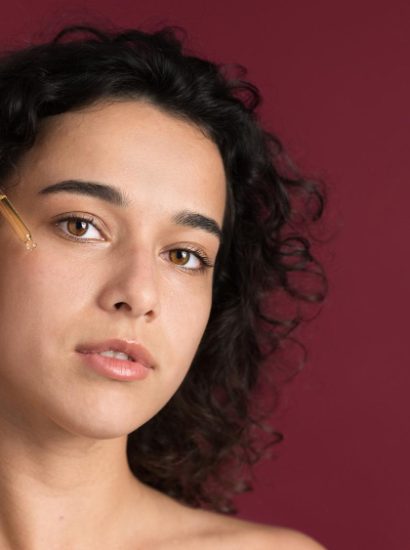If you’ve ever walked out of a salon with perfect color-treated hair only to see it fade or turn brassy after a few washes, you’re not alone. Maintaining vibrant hair color can be tricky, especially for blonde, gray, or highlighted hair. That’s where shampoo toning comes in.
Toning shampoo is a color-depositing formula designed to neutralize unwanted undertones and refresh your hair color between salon visits. It’s one of the easiest and most effective ways to keep your hair looking fresh, shiny, and professionally toned without constant touch-ups.
In this guide, we’ll explain what shampoo toning is, how it works, its benefits, and the best ways to use it for your specific hair type and color.
What Is Shampoo Toning?
Shampoo toning, also known as using a toning shampoo, refers to the process of using a specially formulated shampoo that contains pigments to balance unwanted tones in your hair color. These shampoos are designed to neutralize brassiness, yellowness, or orange undertones, depending on your hair’s base color.
For example, blondes often use purple shampoo to cancel out yellow tones, while brunettes might use blue shampoo to counteract orange hues. Toning shampoos can also enhance gray or silver hair by keeping it cool and bright instead of dull or yellow.
Unlike regular shampoo, toning shampoo doesn’t just cleanse your hair — it deposits color pigments to correct and refresh your overall tone.
How Does Shampoo Toning Work?
The science behind shampoo toning is based on the color wheel principle — opposite colors neutralize each other.
Here’s how it works:
When you wash your hair with a toning shampoo, small amounts of pigment are deposited onto your hair strands. These pigments sit on the outer layer of the hair cuticle and work to counteract unwanted warm tones.
For instance:
- Purple neutralizes yellow (ideal for blonde and gray hair)
- Blue neutralizes orange (ideal for brunettes and darker blondes)
- Green neutralizes red (less common, but used for deep brunettes)
The longer the shampoo is left on the hair, the more pigment it deposits, allowing for customizable toning results.
Different Types of Toning Shampoos
Toning shampoos come in a range of colors and formulations tailored to specific hair shades and goals. Understanding the types can help you choose the best one for your needs.
Purple Shampoo:
Perfect for blonde, silver, or gray hair. It removes yellow undertones that make the hair look dull or brassy.
Blue Shampoo:
Ideal for brunettes or darker blondes. It counteracts orange or coppery tones that appear after lightening or coloring.
Silver or Gray Shampoo:
Designed for gray, platinum, or silver hair to enhance brightness and prevent yellowing.
Green Shampoo:
Less common but useful for those with dark brown or black hair to minimize red tones.
Benefits of Shampoo Toning
Shampoo toning offers numerous benefits for both natural and color-treated hair.
Color Maintenance:
It keeps your hair color vibrant between salon visits by neutralizing unwanted tones.
Cost-Effective:
It extends the time between color appointments, saving money on professional treatments.
Easy to Use:
Toning shampoos can be applied during your regular shower routine, requiring no extra equipment or professional help.
Adds Shine and Brightness:
Most formulas contain nourishing ingredients like keratin, argan oil, and vitamins that enhance shine and smoothness.
Customizable Results:
By adjusting how long you leave the shampoo in, you can control the intensity of the toning effect.
How to Use Toning Shampoo Properly
Using a toning shampoo correctly is key to achieving even, natural-looking results.
Step 1: Choose the Right Shade
Select a shampoo that complements your hair color — purple for blonde or gray, blue for brown, etc.
Step 2: Wet and Prep Hair
Dampen your hair thoroughly with lukewarm water. Avoid hot water, which can open the cuticle too much and cause uneven pigment absorption.
Step 3: Apply and Massage
Apply the toning shampoo evenly throughout your hair, focusing on areas with the most brassiness. Massage gently to distribute pigment.
Step 4: Leave It On
Let the shampoo sit for 2 to 5 minutes for subtle toning, or up to 10 minutes for stronger results. Always follow the instructions on the label.
Step 5: Rinse and Condition
Rinse thoroughly and follow with a moisturizing conditioner or mask to keep your hair soft and hydrated.
Common Mistakes to Avoid
Even though toning shampoos are simple to use, some mistakes can lead to uneven results or dryness.
Overuse:
Using it too often can make your hair dull or tinted with an unnatural hue (like purple or blue). Once or twice a week is usually enough.
Skipping Conditioner:
Toning shampoos can be slightly drying, so always use a hydrating conditioner afterward.
Leaving It Too Long:
Excessive exposure time can stain porous hair. Start with shorter intervals and build up gradually.
Wrong Shade Choice:
Choosing the wrong color shampoo can worsen brassiness instead of neutralizing it.
Best Practices for Maintaining Color-Treated Hair
To make the most of your toning shampoo and preserve your hair color longer, follow these expert care tips.
- Use sulfate-free shampoos on alternate days to prevent color fading.
- Limit heat styling, and always use a heat protectant spray when necessary.
- Rinse hair with cool water to seal the cuticle and retain pigment.
- Deep condition your hair weekly to restore moisture and prevent brittleness.
- Avoid prolonged sun exposure or chlorine without UV protection for hair.
Consistency and gentle care are key to maintaining salon-quality color.
Choosing the Right Toning Shampoo for Your Hair Type
Not all toning shampoos are the same. Consider these factors before choosing one:
Hair Color:
- Blonde or gray hair: Purple shampoo
- Brunette or dark blonde: Blue shampoo
- Deep brown or black: Green shampoo
Hair Texture:
If your hair is dry or coarse, look for toning shampoos with added hydrating ingredients like coconut oil or keratin.
Sensitivity:
If your scalp is sensitive, opt for sulfate-free and paraben-free formulas to avoid irritation.
Desired Tone:
If you prefer a cool, ashy tone, use the product regularly. For warmer tones, use it less frequently.
How Often Should You Use Toning Shampoo?
The ideal frequency depends on your hair type and color intensity.
For blonde or highlighted hair, using purple shampoo once or twice a week helps maintain cool tones without over-toning. Brunettes may use blue shampoo once a week or every other wash.
If your hair is naturally gray or silver, you can use toning shampoo up to three times a week to keep yellow tones at bay. Always balance it with a nourishing conditioner to prevent dryness.
Conclusion
Shampoo toning is an easy and effective way to keep your hair color looking salon-fresh and vibrant. Whether you are a platinum blonde, brunette, or have natural gray strands, the right toning shampoo can help neutralize unwanted undertones and enhance your natural beauty.
By understanding how it works, using it properly, and avoiding common mistakes, you can enjoy brighter, more balanced color without spending a fortune on frequent salon visits. Remember, healthy hair is beautiful hair, and consistent care is the secret to lasting color brilliance.
FAQs
1. What does a toning shampoo do?
A toning shampoo deposits pigments that neutralize unwanted undertones in your hair, keeping your color bright and balanced between salon visits.
2. Can toning shampoo replace regular shampoo?
No. Toning shampoos should be used in addition to your regular shampoo routine, typically once or twice a week, to avoid over-toning or dryness.
3. Is toning shampoo suitable for natural hair?
Yes. Even if your hair isn’t colored, toning shampoos can enhance shine and tone, especially for gray or highlighted natural hair.
4. How long should I leave toning shampoo in my hair?
Most toning shampoos should be left on for about 2 to 5 minutes. For stronger toning, you can leave it up to 10 minutes, but always check product instructions.
5. Will purple shampoo make my hair purple?
If used correctly, no. However, overuse or leaving it on too long can cause temporary purple or blue tinting, especially on porous hair.
Also read: What Is Lip Plumping? How It Works, Benefits & Risks Explained





